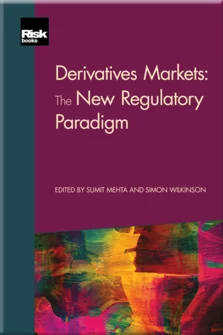Dodd–Frank
Azam H Aziz, Geoffrey B Goldman and Donna M Parisi
Dodd–Frank
Introduction
European Market Infrastructure Regulation
Dodd–Frank
Basel III
Solvency II
CCPs: Central Clearing of OTC Derivatives
Banks: The Impact of New Regulation
Asset Managers
Hedge Funds: Risk Management in an Illiquid World
Insurers: Liability-driven Investing for Insurers
Corporate Treasuries
Sovereigns
Other Sectors
Counterparty Risk Management
Collateral: Transformation & Optimisation
Liquidity
Pricing
Conclusion
The Dodd–Frank Wall Street Reform and Consumer Protection Act (the Dodd–Frank Act) was enacted in July 2010 to promote the “financial stability of the US by improving accountability and transparency in the financial system, to end ‘too big to fail’, to protect the American taxpayer by ending bailouts, to protect consumers from abusive financial services practices, and for other purposes”.11 Preamble of the Dodd–Frank Wall Street Reform and Consumer Protection Act. More specifically, the implementation of the Dodd–Frank Act has changed profoundly how derivative products are traded by subjecting market participants, either directly or indirectly, to new or revised regulations and requirements.
In this chapter, we will provide a broad overview of some of the key components of the Dodd–Frank Act as it relates to the derivatives markets, mainly the implementation of Title VII (Wall Street Transparency and Accountability) and Section 619 of Title VI of the Dodd–Frank Act (the Volcker Rule). Key changes under Title VII and the Volcker Rule include:
-
- increased regulation of the derivatives market by broadening the categories of derivatives market participants subject to
Copyright Infopro Digital Limited. All rights reserved.
As outlined in our terms and conditions, https://www.infopro-digital.com/terms-and-conditions/subscriptions/ (point 2.4), printing is limited to a single copy.
If you would like to purchase additional rights please email info@risk.net
Copyright Infopro Digital Limited. All rights reserved.
You may share this content using our article tools. As outlined in our terms and conditions, https://www.infopro-digital.com/terms-and-conditions/subscriptions/ (clause 2.4), an Authorised User may only make one copy of the materials for their own personal use. You must also comply with the restrictions in clause 2.5.
If you would like to purchase additional rights please email info@risk.net









